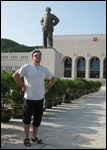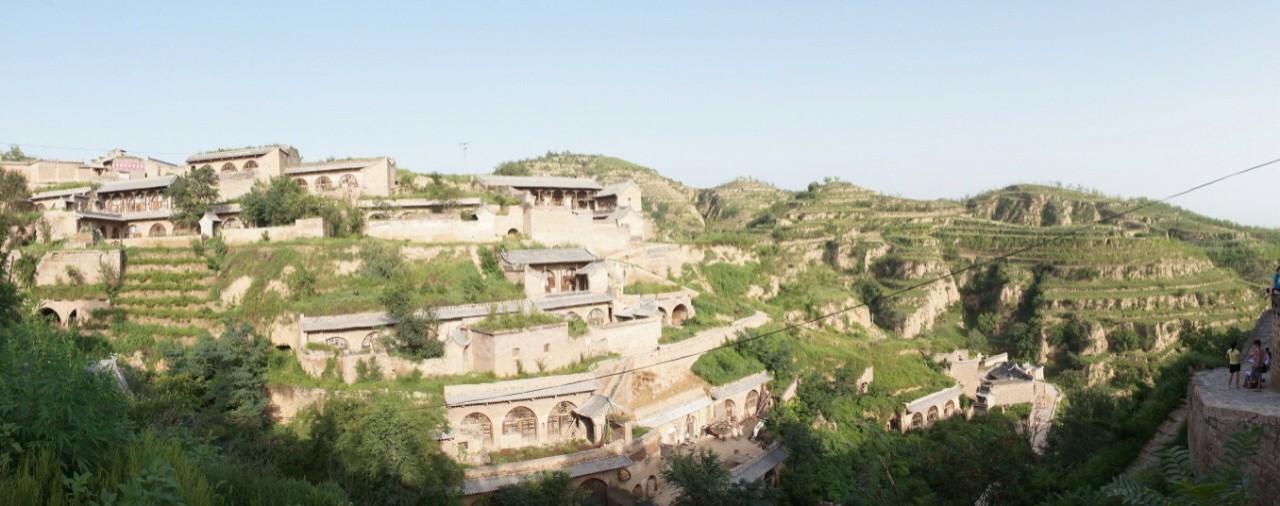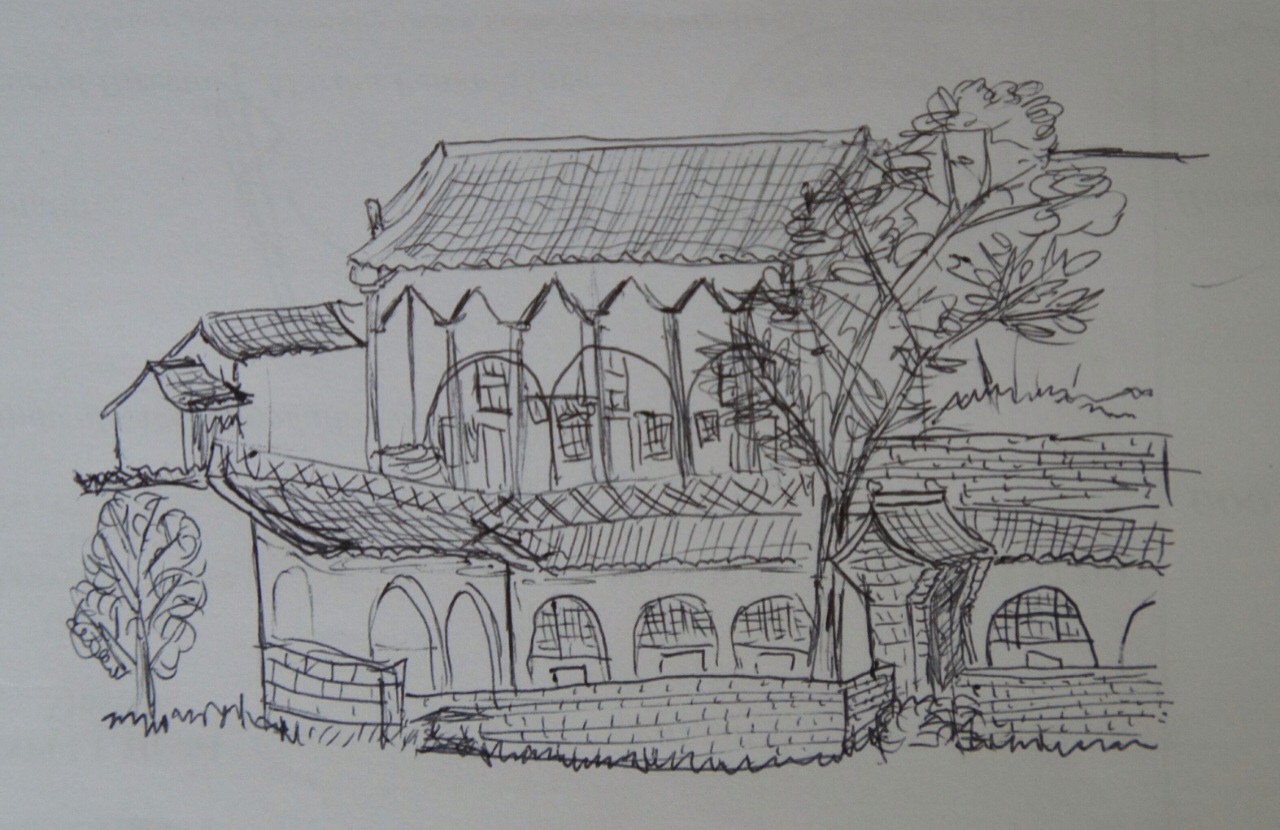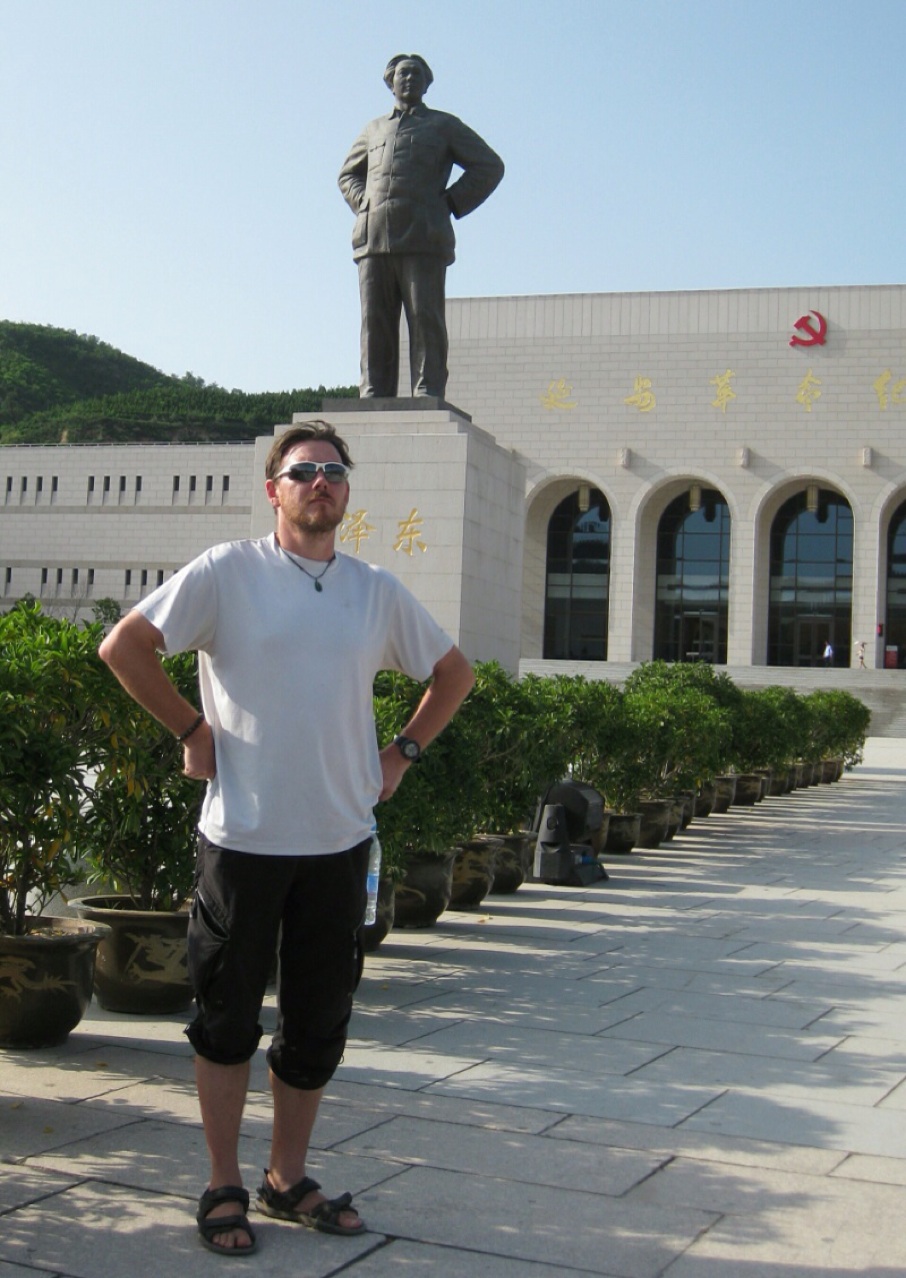Some 550 years ago, the people of the mountainous regions around Lijiashan realized there was living potential in the natural caves perforating the steep sandstone walls. The mighty Yellow river cuts dramatically through the landscape, and its banks are covered with reinforcement steel, concrete, excavation machines and lots of manpower; the region is being quickly urbanised.
Not so much so some way uphill. Modern China has scarcely reached the little cave village, and the climb up the winding mountain path in the steaming heat provided a stunning view of a terraced Chinese version of Hobbiton. As we drew ever closer to our host family, the numbers of aspiring artists increased; here was a perfect place for getting your scetchbooks or your canvas out, and start applying coal, watercolour or oil. The landscape and architecture was indeed stunning and wonderfully rustique at once, and it took not long for some of us, myself included, to follow suit. I put ink to paper in a feeble attempt at recreating a particular home across the narrow valley, bathing in the rays of the setting sun. Tom proved to have a hidden talent with watercolours, and Shane successfully added coal to paper. Cosiness and calmness interspersed the occasional bout of badminton, and after a delicious home-cooked meal, the couples went into the couple-cave, the men went into the man-cave, and the girls went into the cavette, I should wager. I stayed backed and finished writing some postcards, but soon crawled into the big shared bed inside.
Heading back to more modern civilisation, we set course for Yan'an, whose claim to fame is that here's where China's communist party originated, and where its headquarters were situated, before declaring the People's Republic of China in 1949 and moving to Beijing. To commemorate this glorious era in recent history, including the events that led up to CCP:s eventual victory, a bombastic museum has been erected close to the actual headquarters, the grounds of which also have been turned into a museum. The political conflict with Kuomintang and, more importantly, the invading forces of Japan called for national unity, and Mao and his communist party provided just that, boosted by the so-called Yan'an spirit, which is basically being hard-working, loyal and of correct political mind. The exhibits and impressive* dioramas informed with no uncertainty how the Yan'an spirit and the CCP single-handedly united China, defeated the Japanese and put an end to World War II. Ever so often by mopping up the enemy's rear area, or so the not too professionally translated information signs declared. And with rear areas came the lame and slightly immature puns: I want to see the rear area of Yan'an, I don't need to see the sun go down on ya nan, Tom doesn't like the big-ass peachy holes in ya nan, but Dani'll go for it. An undefined city it is, with both wide boulevards and narrow streets, shopping malls and street markets, all the while with the one-sided shadow of Mao's rear area looming ovr it. It is a city that doesn't necessarilly invite comprehension. Or, you know, I don't want to grab ya nan.
-----
*) Though not nearly as impressive as those in Park Pobedy
-----





